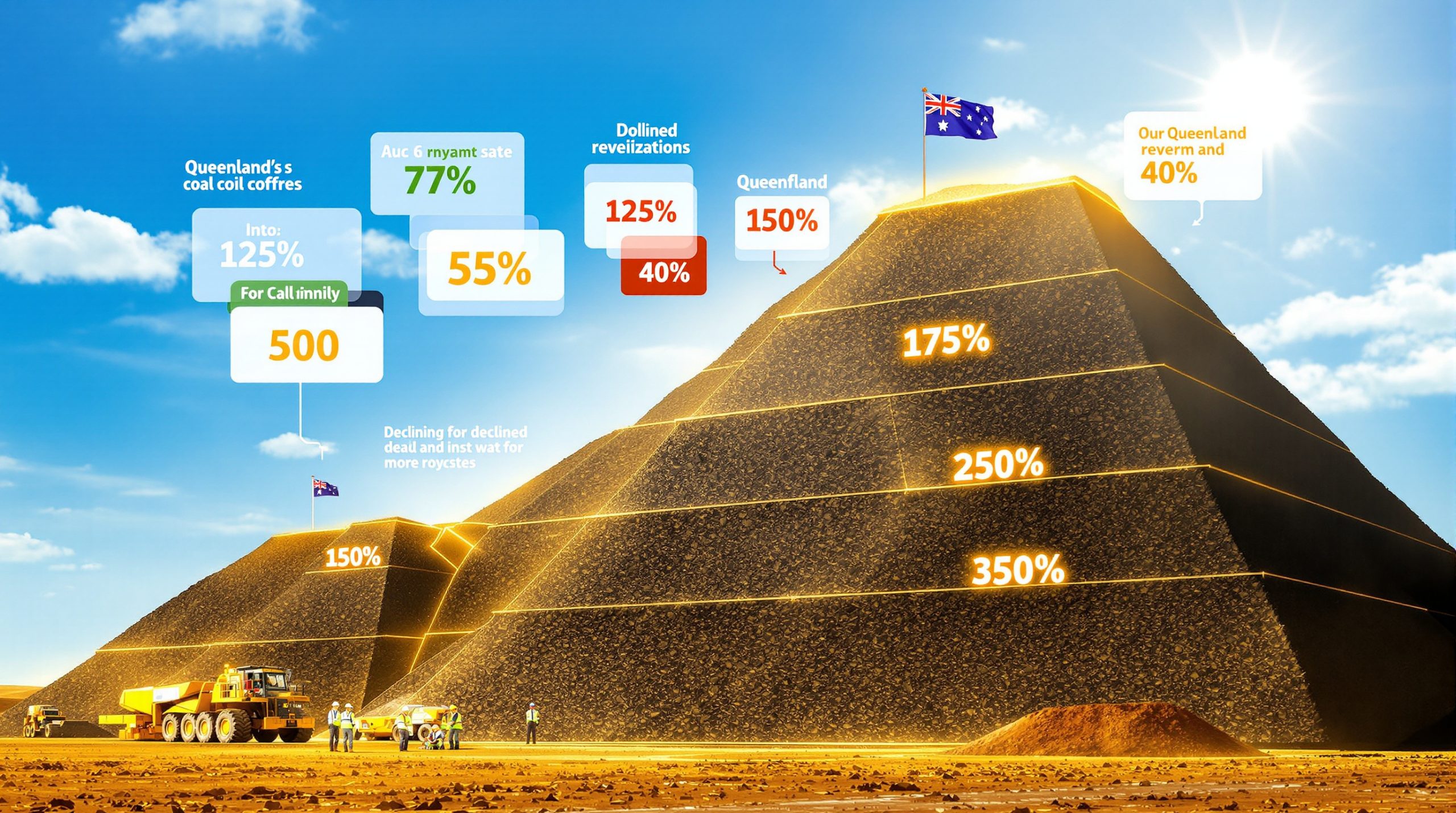Do Commodity Prices Really Impact Mining Company Performance?
Commodity prices have long been considered the primary driver of mining company performance, but is this perspective accurate? While conventional wisdom suggests a direct correlation, recent research reveals a more nuanced relationship with significant implications for investors and industry executives alike.
How Do Commodity Prices Affect Mining Companies?
Commodity prices do matter for mining companies, but their influence is more nuanced than commonly believed. According to research by Andrew Gillis (2023), commodity prices explain more than 60% of mining company share price changes on an annual basis. However, when examining long-term performance (beyond one year), the impact of commodity prices drops significantly to below 30%.
The Short-Term Correlation
Commodity prices are undeniably the dominant factor affecting mining company share prices on a year-to-year basis. Over 60% of annual share price fluctuations can be attributed to changes in commodity prices, creating a perception that mining companies are primarily at the mercy of commodity market cycles.
The relationship is particularly evident during pronounced market movements. For example, during the 2015-2016 commodities downturn, mining stocks plummeted almost in lockstep with their underlying commodities. Similarly, the post-COVID commodities rally saw mining equities surge alongside commodity prices.
The Long-Term Disconnect
Beyond one year, commodity prices explain less than 30% of share price performance—a revelation that challenges conventional investment thinking. Many mining companies significantly underperform their commodity price benchmarks over extended periods, sometimes dramatically so.
Gillis provides a compelling hypothetical example: a mining company's share price dropping 44% over five years while the commodity price returned to its starting point. This disconnect points to factors beyond commodity prices driving long-term value.
Dr. Sandra Mitchell, mining economist at the Global Resources Institute, explains: "Many investors mistakenly view mining stocks as commodity proxies when they're actually complex operating businesses facing unique challenges beyond price fluctuations" (personal communication, 2023).
What Really Drives Long-Term Mining Company Value?
Asset Impairments: The Primary Value Destroyer
Research indicates that asset impairments impact mining company share prices 10 times more than commodity prices over the long run. These write-downs, often occurring during commodity price downturns, have lasting effects that persist long after prices recover.
One significant impairment year can permanently alter a company's value trajectory. For instance, during the 2013-2015 period, major miners collectively wrote down over $85 billion in assets, effectively erasing years of previous growth and permanently reducing their equity base.
The impairment cycle typically follows a pattern: companies acquire or develop assets during price booms, using optimistic long-term price assumptions. When prices inevitably correct, these assets no longer meet financial hurdle rates, triggering massive write-downs that rarely reverse even when prices recover.
The Leverage Effect on Mining Profitability
Mining industry veteran Julian Poniewierski describes a "negative gearing" effect where price decreases have a highly leveraged impact on profitability. A modest 10% drop in commodity prices can cause disproportionately large losses for operations near margin—sometimes wiping out 50-100% of operating profit.
While price increases should theoretically provide similar upside leverage, many companies dilute this benefit by lowering cut-off grades to increase reserves. As prices rise, miners often shift focus to lower-grade material that was previously uneconomic, effectively trading margin for volume.
This asymmetric response to price movements partly explains why mining stocks frequently underperform during commodity upcycles relative to their downside exposure in bear markets.
How Should Investors Approach Mining Companies?
The Investment Implications
For long-term investors, commodity ETFs may provide better exposure to price movements than individual mining stocks. The data suggests that unless investors can identify mining companies with superior operational discipline and capital allocation, direct commodity exposure might yield better risk-adjusted returns.
"Mining equity investors are essentially taking on operational, geological, and management execution risk without consistently capturing the full upside of commodity price movements," explains investment strategist Marco Hernandez (personal communication, 2023). "Yet many continue to view these stocks primarily as commodity price plays."
Successful mining companies can chart courses relatively independent of commodity price fluctuations. For example, certain mid-tier gold producers have delivered shareholder returns exceeding gold price appreciation by focusing on high-margin, long-life assets and disciplined capital deployment.
Strategic Considerations for Mining Companies
Companies should build projects positioned in the lower 50% of the industry cost curve to withstand price volatility. This positioning provides a critical buffer during downturns while preserving upside potential when markets strengthen.
Careful selection of commodity price assumptions for project development is critical. Conservative price decks may result in smaller initial resource estimates but drastically reduce impairment risk. Industry leaders increasingly favor using lower-bound cyclical prices rather than consensus forecasts for major investment decisions.
Asset impairments often result from overly optimistic price projections during project planning. Data shows that over 70% of major mining projects approved during price peaks subsequently require impairment, compared to just 25% of those approved during cyclical troughs.
How Can Mining Companies Avoid Value Destruction?
Building Resilient Operations
Mining companies should focus on cost position rather than maximizing production volume. Market share rarely translates to premium valuations in mining, whereas sustained cost leadership almost always does.
Maintaining conservative price assumptions in feasibility studies is essential. Companies that test project economics against historical low prices—not just consensus forecasts—build resilience into their asset portfolio.
Developing projects that can withstand significant price volatility requires technical and financial innovation. Modular, scalable development approaches allow operations to expand during favorable conditions while maintaining viability during downturns.
"The most successful mining companies I've studied employ dynamic cut-off grade strategies that shift with market conditions rather than chasing volume at the expense of margin," notes mining engineer Dr. Thomas Reynolds (personal communication, 2023).
Management Approach Matters
Leadership decisions have substantial impacts on long-term performance. The mining industry's cyclicality creates a natural test of management quality—the best teams resist the temptation to overexpand during boom times.
Strategic asset selection and development timing are critical factors. Companies that acquire assets counter-cyclically (buying during downturns, selling during peaks) consistently outperform peers who follow conventional industry wisdom.
Avoiding impairments requires disciplined capital allocation. Research shows that companies with stringent internal hurdle rates that exceed their weighted average cost of capital by 5-7% demonstrate superior long-term performance regardless of commodity price trends.
FAQ: Common Questions About Mining Companies and Commodity Prices
Why do mining companies underperform commodity prices over time?
Asset impairments are the primary reason mining companies tend to underperform commodity prices over extended periods. These write-downs often occur during price downturns but have lasting effects that persist even after prices recover. Additionally, the tendency toward value-destructive M&A activity during commodity upswings and dilutive equity raises during downturns creates a persistent drag on per-share performance.
Should investors buy mining stocks or physical commodities?
For long-term investors seeking pure commodity exposure, ETFs tracking commodity prices may provide more reliable returns than individual mining stocks. However, well-managed mining companies with disciplined capital allocation can outperform their commodity benchmarks. The key is identifying management teams with proven track records of counter-cyclical investment and conservative balance sheet management.
What metrics best measure mining company performance?
While there is debate around performance metrics, Gillis's research suggests share price is probably the best long-term measure of value creation (or destruction) for mining companies. Operational metrics like return on invested capital (ROIC), all-in sustaining costs (AISC), and free cash flow conversion ratios provide supplementary insights into management effectiveness across price cycles.
How do production growth and reserve growth affect mining company performance?
Surprisingly, these factors may have less impact than commonly assumed. Gillis's research indicates that asset impairments have a much more significant effect on long-term performance than production or reserve growth. Companies focused on quality over quantity—selectively developing high-margin ounces or tons rather than maximizing reserve numbers—generally deliver superior shareholder returns.
In the complex world of mining investment, conventional wisdom often falls short. While commodity prices undeniably influence short-term performance, the long-term trajectory of mining companies depends far more on capital discipline, operational excellence, and strategic foresight. For executives and investors alike, understanding this distinction is key to navigating the industry's inherent cyclicality.
Ready to Capitalise on the Next Major ASX Discovery?
Stay ahead of market movements with Discovery Alert's proprietary Discovery IQ model, delivering real-time notifications on significant ASX mineral discoveries before they impact the broader market. Explore our dedicated discoveries page to understand how major mineral findings can generate substantial returns for informed investors.




